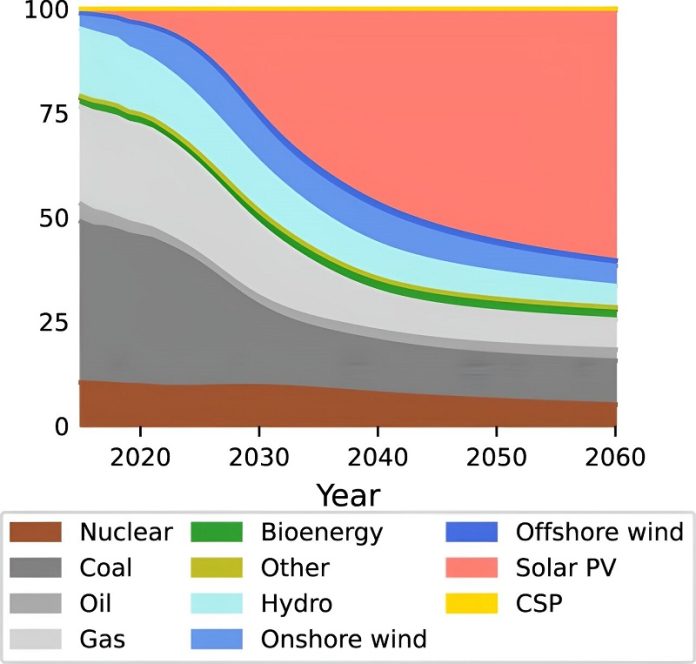
Imagine the sun not just giving us light and warmth but also powering most of our world.
Sounds like science fiction, right?
But, according to a new study, we might be closer to this future than you think!
Researchers have found that solar power could become our main way of getting energy before 2050. This big shift wouldn’t even need the push of strong climate rules.
But wait!
Like all good things, there are a few bumps on this sunny road. The experts have pointed out four big challenges we need to overcome.
Let’s dive in!
First, a quick catch-up: Solar power is energy that we get from the sun. We use devices called ‘photovoltaics’ (let’s just call them solar panels) to catch sunlight and change it into electricity. And these panels have been getting better and cheaper, super fast!
Dr. Femke Nijsse from the University of Exeter says we’re moving away from a world that mostly depends on fossil fuels (like coal and oil).
That’s the old way of doing things. The fun part is that companies keep learning to use solar tech better and cheaper. So, this isn’t just a temporary trend; solar power is on the rise!
However, it’s not all sunshine and rainbows. Here are the four main challenges:
Power Grids
Sunlight isn’t constant. It changes throughout the day and seasons. So, we need to make our power grids ready for this. If we don’t plan well, we might have to use fossil fuels when there’s not enough sun.
Some ways to tackle this are to use other renewable sources, like wind, connect different areas with cables, store excess electricity, and have rules to use power efficiently (like charging electric cars when everybody else isn’t using much electricity).
Money Matters
Here’s a surprise – even with the benefits of solar energy, many places, especially in poorer countries, can’t afford to switch over.
Richer countries are getting most of the money that’s set aside for cleaner energy. We need to make sure poorer countries can also invest in solar power, especially in Africa, where there’s a lot of sun and potential.
Resources for Solar
To build a world run by solar energy, we need some important materials, like lithium (found in batteries) and copper.
As we go more and more green, the demand for these materials will shoot up. By 2040, almost 90% of the lithium we use might go just for green energy!
Job Concerns
As we shift to solar, jobs in the fossil fuel industry might go down. Imagine working at a coal mine and hearing that the world is moving to solar. That’s a big worry for around 13 million people worldwide. Governments need to ensure these folks don’t get left behind.
Dr. Nadia Ameli from UCL says that even with the drop in costs for renewables, there are still big challenges. For countries trying to develop and grow, accessing money to invest in clean energy is still hard. So, while there’s hope, there’s also a need for action.
In short, the future looks bright (pun intended) with solar power leading the way. However, to make the most of this sunshine revolution, we need to tackle these challenges head-on.
The next time you bask in the sun, remember: it’s not just about warmth and tans, but a brighter, greener future!
The study was published in Nature Communications.
Follow us on Twitter for more articles about this topic.
Source: University of Exeter.



